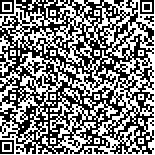| 引用本文: |
-
朱风尚,朱国英,黄东平,等.重症急性胰腺炎大鼠胰腺全基因表达谱的变化[J].同济大学学报(医学版),2013,34(2):11-16. [点击复制]
- ZHU Feng-shang,ZHU Guo-ying,HUANG Dong-ping,et al.Changes of genome expression profile in pancreas of rats with severe acute pancreatitis[J].同济大学学报(医学版),2013,34(2):11-16. [点击复制]
|
|
| 本文已被:浏览 332次 下载 386次 |

码上扫一扫! |
| 重症急性胰腺炎大鼠胰腺全基因表达谱的变化 |
| 朱风尚1,朱国英2,黄东平2,沈晓莹3,杨长青1,郜恒骏1,3 |
|
|
| (1. 同济大学附属同济医院消化内科,上海200065;2. 上海市普陀区人民医院,上海200060;3. 生物芯片上海国家工程研究中心,上海201203) |
|
| 摘要: |
| 目的观察牛磺胆酸钠诱导的重症急性胰腺炎(severeacutepancreatitis,SAP)大鼠胰腺基因表达谱的变化。方法40只SD大鼠随机分为假手术组和SAP模型组,每组20只。经胰胆管逆行注射4%牛磺胆酸钠复制SAP模型,假手术组注射生理盐水,造模48h后处死动物。检测血清淀粉酶和C-反应蛋白(C-reactiveprotein,CRP)水平;H-E染色观察胰腺和肺组织病理变化;Illumina大鼠全基因组表达谱基因芯片分析胰腺表达谱变化;实时反转录一多聚酶链反应(Real-TimereversetranscriptionPCR,RT-PCR)验证部分基因(F11r、Cdhl)。结果SAP模型组血清淀粉酶、CRP明显高于假手术组[(7892±1776.0)vs(1296±326.2)U·L﹣1,P<0.01;(106.5±19.9)vs(61.7±15.9)μg·m1﹣1,P〈0.01)];Schmidt胰腺病理半定量积分法显示,SAP组胰腺坏死、出血、炎性细胞浸润、水肿指数等较假手术组明显(均P<0.01)。与假手术组相比,胰腺组织表达谱28个基因表达明显变化,其中下调5个,上调23个。基因功能分析显示其与细胞黏附分子通路、钙钾离子通道、促分裂原活化蛋白激酶(mitogen-activatedproteinkinase,MAPK)信号通路、脂肪酸代谢等密切相关。RT-PCR对涉及细胞黏附的F11r、Cdhl基因的验证证实了芯片结果。结论牛磺胆酸钠诱导的SAP大鼠基因表达谱改变涉及到细胞黏附、钙钾离子通道、MAPK信号通路和脂肪酸代谢。 |
| 关键词: 重症急性胰腺炎 基因芯片 表达谱 实时反转录-多聚酶链反应 |
| DOI:10.3969/j.issn1008-0392.2013.02.003 |
|
| 基金项目:上海市普陀区科委科研基金(PTKW08-C03) |
|
| Changes of genome expression profile in pancreas of rats with severe acute pancreatitis |
| ZHU Feng-shang1,ZHU Guo-ying2,HUANG Dong-ping2,SHEN Xiao-ying3,Yang Chang-qing1,GAO Heng-jun1,3 |
| (1. Dept. of Gastroenterology, Tongji Hospital, Tongji University, Shanghai 200065, China;2. Shanghai Putuo District People's Hospital, Shanghai 200060, China;3. National Engineering Center for BioChip at Shanghai, Shanghai 201203, China;1. Dept. of Gastroenterology, Tongji Hospital, Tongji University, Shanghai 200065, China;3. National Engineering Center for BioChip at Shanghai, Shanghai 201203, China) |
| Abstract: |
| Objective To investigate the changes of genome expression profiles of pancreas in rats with severe acute pancreatifis (SAP). Methods Forty Sprague-Dawley rats were randomly divided into sham control group (n=20) and SAP group (n=20). SAP was induced by retrograded injection of 4% sodium taurocholate into the pancreatic duct of rats. After 48 h, the two group animals weresacrificed. Serum amylases, C-reactive protein (CRP), pathological changes in pancrea and lung tissue were evaluated. Changes in pancreatic genome profile were examined with Rat Illumina microarry. Real-time reverse transcription PCR (RT-PCR) was adopted to validate the part of genes from microarray (F11r,Cdhl). Results Serum levels of amylase, CRP in SAP group were significantly higher than those in the sham control group[(7 892±776.0) vs (1 296±326.2) U·L﹣1,P<0.01;(106.5±19.9) vs (61.7±15.9)μg·ml﹣1, P<0.01]. Schmidt semi- quantitative integration showed necrosis, hemorrhage, inflammatory cell infiltration, edema index in SAP group were significantly increased compared with the control group (all P<0.01). Compared with the control group, the expressions of 28 genes were significantly changed included 5 down- regulated and 23 up-regulated. Gene function analysis showed that these genes were closely related to cell adhesion, calcium potassium channels, mitogen-activated protein kinase (MAPK) signaling pathway and fatty acid metabolism. The mRNA expressions of F11r and Cdhl were validated by RT- PCR. Conclusion The gene expression profiles in pancreas are significantly changed in SAP rats induced by sodium taurocholate, and the mechanisms may involve in cell adhesion, calcium potassium channels, MAPK signaling pathway and fatty acid metabolism. |
| Key words: severe acute pancreafitis gene chip expression profiling Real-Time reverse transcription PCR |